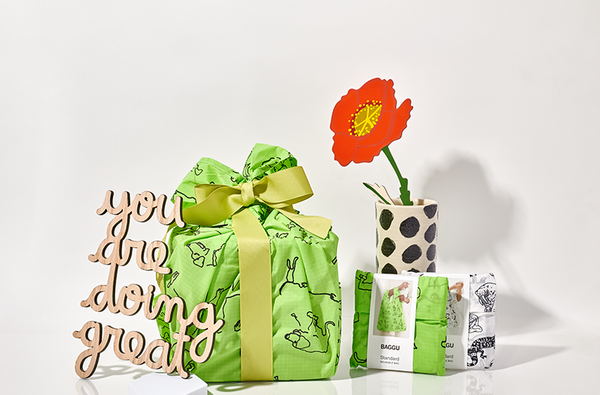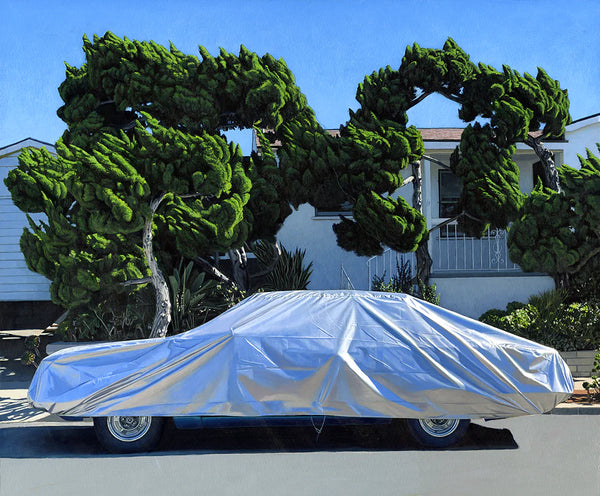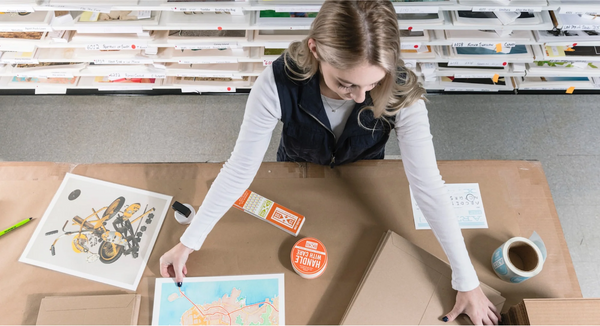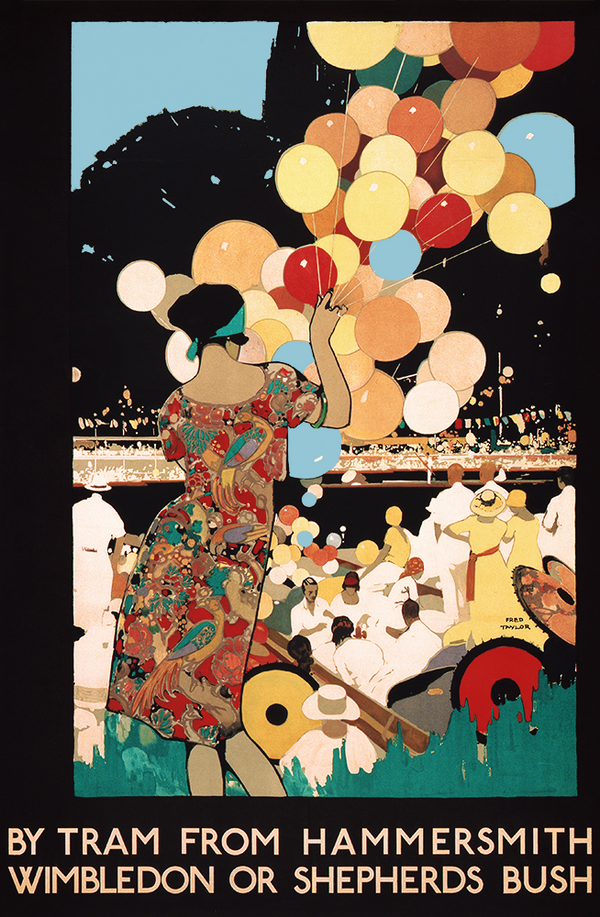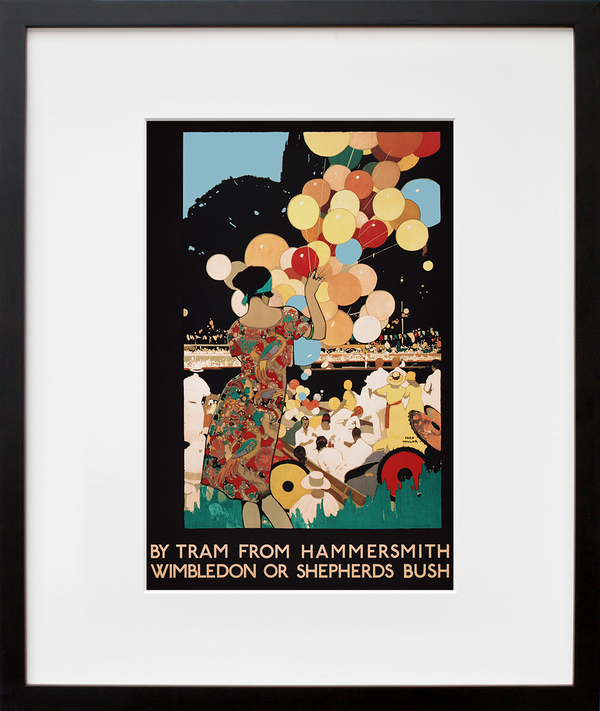Fury by Martha Rich
Painting was the first form of written human expression. The earliest documented piece of art, a fragment of rock featuring crosshatched lines of ochre, is 72,000 years old. The next-oldest, a fantastic cave painting of three ochre pigs (and several gorgeous handprints, likely a woman’s), is 45,000 years old. Perhaps it’s the ancient and innate impulse in all of us to use some sort of colored stuff to make some sort of image that makes painting as a medium so magnetic, arresting, and powerful.
Asbury Park South by Florine Stettheimer (1920)
Stettheimer painted Asbury Park South in 1920, after visiting the segregated New Jersey beach with author and Harlem Renaissance-patron Carl Van Vechten. Asbury Park has a long, checkered history when it comes to segregation, with its beaches forming something of a stage upon which the city’s racist policies played out. Local Black activists fought segregation on the beaches for decades, achieving incremental gains throughout the 19th and 20th centuries.
In Asbury Park South, Stettheimer rejects the racist caricatures that were commonplace in the work of white artists at the time, and instead paints the subjects as unique, fully-realized personalities, as explored through their poses, actions, and dress. In keeping with her style, she centers and celebrates the act of play. The human subjects are nearly all at leisure, enjoying each other and the beach. Could this be the first depiction by an American painter of an integrated social gathering?
Birth Control Portrait I by Joan LeMay (2019)
"I started painting medication portraits in 2018 after making one just for myself of my beloved asthma inhaler, which is something that is very literally always with me and has been since I was two years old. Soon afterwards, I realized that there's a lot of power in celebrating the medications that allow us to live our healthiest lives. In joyfully painting medications that aid people with management of everything from depression and anxiety to thyroid issues, MS, cancer and acne, I hope to turn any stigma around various conditions and their treatments into attitudes of sincere gratitude for the existence of the substances that are bacon-saving for those who need them. With this Birth Control Portrait I, I wanted to extend the concept to include the classic birth control pill wheel, for which we can thank Margaret Sanger and her lifetime of activism, research and underwriting."
—Joan LeMay
The Swan, No. 1, Group IX/SUW by Hilma af Klint (1914)
"Af Klint was convinced that materialism and nationalism had plunged the world into violence and chaos. A spiritual change was needed. A new way of thinking and feeling had to develop. Her series opened up a doorway. Spirit had to overcome black and white thinking....She did not believe in the cult of strength and violence that was widespread in her times."
—Julia Voss
"Lately—in these strange and exhausting days, I’ve been thinking a lot about uncertainty. In my recent paintings, that uncertainty and the idea of feeling or being lost is a new focus for me. A profound lostness which could be the unsettling experience of finding yourself in a world turning alien around you, or more optimistically, a lostness that could lead to a hopeful escape to a new world. These paintings show a desire to escape into nature which unfortunately seems to be on a shakier ground than ever, with the threat of the changing climate. For better or worse, buildings are breaking free from the superstructures of previous paintings. Though I hope for the best, my paintings frequently express my anxiety for society and our world."
—Amy Casey
Daydreaming by Isabela Humphrey (2024)
"In this piece, I explored the quietness of introspection and the power of daydreaming. The woman, seated with one hand resting gently on her knee, represents a moment of stillness and inner reflection, inviting contemplation. Behind her, the lush plants symbolize growth and vitality, reminding us of the connection between our own thoughts and nature around us."
—Isabela Humphrey
My Butt by Helena Wurzel (2010)
"I make paintings of women. They are depictions of my girlfriends and myself in singular moments of self-reflection and celebration. My style tends to be bold and graphic. Whether capturing a glance, an irreverent bootie shot, or someone daydreaming, the figures tend to not face the viewer, but rather to each be in a contemplative state. Formal elements such as color, light, and tightly cropped spaces help create specific moods. Fashion photography has always been an influence and I love to include sunglasses, jewelry, and bathing suits (I often paint summery beach scenes) as a way of adding reflections, texture, or pattern. I hope to unlock something extraordinary in everyday scenes. My work is tied to the reality and imagination inherent in the feminine realm."
—Helena Wurzel

